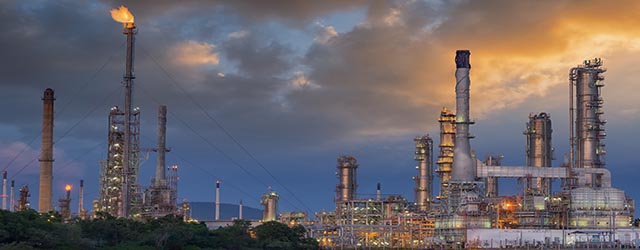Nations slash subsidies in the face of cheap oil and regional conflicts.

Back To Special Issue
Over the next five years, the oil exporting countries of the Middle East and North Africa could incur a $1 trillion deficit and face the prospect of up to 10 million people looking for work, according to forecasts from the International Monetary Fund (IMF). That outlook contrasts sharply with last year’s assessment by Saudi Arabian oil minister Ali Al-Naimi, who said lower oil prices were “no cause for alarm” even though oil accounts for a whopping 90% of government revenues. The impact of lower oil prices on the kingdom’s economy led Standard & Poor’s to downgrade its rating to A+/A-1 in October and to warn of a further downgrade.
The six members of the Gulf Cooperation Council (GCC) face a new reality and intense pressure to speed reforms. Oil prices have slumped more than 50% in the past year, wiping $360 billion off government revenues in 2015 alone. Some countries, like the United Arab Emirates, have risen to the challenge, while others, including Saudi Arabia, are slashing spending. But even with spending cuts, the government is rapidly depleting its financial war chest. According to the Saudi Arabian Monetary Authority, foreign exchange reserves fell to $646.9 billion at the end of September, from $736.5 billion a year earlier.
Saudi Arabia’s domestic economic concerns are weighing heavily on the kingdom as its war in Yemen and intervention in Syria highlight the region’s increased volatility. Expensive conflicts and economic largess, even with selective cutbacks, could push Saudi Arabia’s deficit to 20% of GDP this year, says Capital Economics.
Banks will likely bear most of the belt-tightening, according to Moody’s. “We expect this slowdown in government spending will be credit-negative for Saudi banks as it will dampen credit growth and moderate deposit flows,” Olivier Panis, a vice president and senior credit officer at the rating agency, said in an October report.
GCC governments have tried to stave off the dissent enmeshing other parts of the region by disbursing subsidies and handouts to maintain citizen loyalty. But heavy spending has rendered their budgets vulnerable to cheaper oil, with most countries in the region unable to balance their budgets as oil prices approach $60 a barrel. Alarmingly, with the exception of Kuwait, Qatar and the UAE, GCC countries under current policies could run out of capital buffers in fewer than five years as a result of large fiscal deficits, the IMF has warned.
IRAN—THE GREAT UNKNOWN
Aside from economic pressures, the nuclear agreement between the P5+1 (China, France, Russia, the UK and the US, plus Germany) and Iran has become an epicenter of GCC worries. Following the so-called “adoption day” in October—when the agreement granting waivers on Iran sanctions entered into force—Iran must now fulfill its obligations before sanctions can be lifted entirely. If that happens, “implementation day,” as it is referred to, could come in the first half of 2016. It would benefit Iran’s economy in four areas: the resumption of oil exports and related products; restoration of banking and financial services, including restored access to SWIFT (Society for Worldwide Interbank Financial Telecommunication); access to foreign financial assets; and the resumption of sales and supplies of parts and services to the automotive and aviation sectors.
According to Capital Economics, Iran’s economy could grow between 6% and 8% annually for a few years following the lifting of sanctions. Additional oil supply from Iran will dampen already low prices even more, adding further downside risk to GCC economies. However, there is a great deal of uncertainty over how long it will take Iran to ramp up oil production, given that the sector has been deprived of investment for years.
GCC members are split over the nuclear agreement. Saudi Arabia and neighboring Bahrain both view Iran as an existential threat. At the other end of the spectrum, Oman brokered secret talks between the Islamic Republic and the US several years ago and is something of a GCC outsider. Oman and Dubai appear to be the main beneficiaries of the Iran deal, which is likely to bring energy agreements for the former and major trading benefits for the latter.
CHEAPER JUICE

The IMF has repeatedly urged the GCC states to diversify their economies and roll back expensive subsidies. In perhaps the boldest step, the UAE deregulated fuel prices earlier this year. The move from fixed, subsidized domestic prices to monthly adjustments in response to global trends should result in significant savings.
“At a time when oil prices are low, reducing subsidies at this moment is a very clever move,” says Jaap Kalkman, managing partner, global energy and utilities practice at Arthur D. Little. However, even after deregulation, UAE fuel prices are still below international prices.
Subsidies cost the Saudi government $83 billion a year, a figure the IMF predicts will fall to $65.9 billion because of declining oil prices. Cheap energy has also ratcheted up domestic electricity consumption, with some 19% of oil production consumed by a wasteful local market. In late October, oil minister Ali Al-Naimi indicated the government was considering the possibility of raising domestic energy prices.
Growth prospects in the GCC for the coming year appear modest—with the exception of Qatar, as it invests heavily in infrastructure ahead of the 2022 World Cup. “The challenge will be for GCC states to cut government spending without substantially impacting the real economy,” says Carla Slim, Middle East and North Africa economist at Standard Chartered, on prospects for 2016.
We expect this slowdown in government spending will be credit-negative for Saudi banks as it will dampen credit growth and moderate deposit flows.
~ Olivier Panis, Moody’s
Elsewhere in the Middle East, lower oil prices may spur growth in previously lackluster economies like Jordan and Lebanon, where recovery is gaining momentum. Political stability and economic reforms have engendered confidence, though it remains fragile. In Egypt, long-delayed parliamentary elections saw a low voter turnout—26%, by official estimates—which was still enough to bolster the presidency of Abdel Fattah el-Sisi.
In the short term, the results are seen as mildly positive for investors, although the outlook for the country is one of growing authoritarianism. Foreign direct investment is likely to increase, and the benefits of the recently discovered Zohr gas field should all but eliminate electricity blackouts, which have curtailed manufacturing output. In the second half of 2015, economic activity ticked up and inflation dropped to 7.5% year-on-year, its lowest level in five years. The IMF is predicting Egypt’s GDP will grow 4.3% in 2016 with help from revenues from the New Suez Canal.
Optimism over Egypt’s economy echoes sentiment elsewhere in the Middle East and is reflected in rising consumer confidence and buoyant stock markets. As ever, though, escalating regional conflicts could be the biggest disruptors of economic progress.



